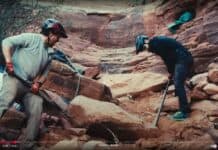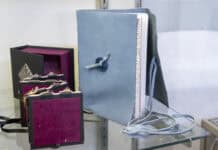Imagine Sedona’s Community Plan but on steroids.
That would be the Coconino National Forest’s updated Land and Resource Management Plan — all 3,000 pages of it. The plan, which has been in the works for the past decade, was last updated in 1987 and is the guide the U.S. Forest Service uses to manage the natural and cultural resources offered throughout the 2 million acres of public lands within the Coconino National Forest.
During the Sedona City Council meeting, Tuesday, Oct. 10, Nicole Branton, district ranger for the Red Rock Ranger District, and Coconino National Forest public service staff officer Bridget Roth were on hand to discuss the aspect of the new plan that impacts the Sedona area.
The Amendment 12 area, which refers to the management area surrounding Sedona, will no longer be an amendment and most everything from that document has now been rolled into this new plan.
“I think of the forest plan kind of as a zoning document for the forest,” Branton said. “It’s kind of a high-level strategic overview of the forest and helps us identify how to manage specific areas. It also gives us direction as to how to carry out project-level decisions. We haven’t had a plan since 1987 so this is a pretty big deal for us as we’re almost ready to roll this out.”
Roth said the updated plan points out the need for change and how to implement those changes to meet the public’s expectations and values for public lands. This includes recreational opportunities and interaction between the public and the U.S. Forest Service.
“How do we as a land management agency both improve and maintain ecosystem health?” she said. “It’s a pretty complex set of tasks that we are charged with.”
Roth said there are four management areas that surround Sedona, which include Oak Creek Canyon, Red Rock, Sedona Neighborwoods and House Mountain Lowlands. These are all based on landscape character descriptions. She said the management areas contribute to a sense of place, have very similar qualities as well as similar management challenges.
“We feel strong that the current plan, as is being developed, provides us with strategic direction that really facilitates the ability for the Coconino National Forest to be flexible in its management,” Roth said. “The 1987 plan is very prescriptive. It says ‘You will do this.’ We now have the opportunity to be adaptive. We can also embrace techniques that are not prescriptive.”
An area of concern from the council — as well as many who live in the Verde Valley — is smoke caused by either prescribed burns or those caused naturally. Roth said science has shown that ecosystems are healthier and more resilient when fire management is used.
The new plan takes smoke into consideration during natural or prescribed burns whereas the 1987 plan does not. The new plan calls for the USFS to work closely with the Arizona Department of Environmental Quality regarding the impact of smoke while meeting state and federal air quality standards.
It’s also a matter of improving communications with nearby national forests during prescribed burns when sharing the airshed. “As you well know, all that smoke ends up in the Verde Valley,” Branton said. “These are practices we’ve been carrying out over the last several years but we’re now codifying them in the forest plan because that 1987 plan didn’t take those kinds of things into consideration.”
Other areas of focus within the new plan include healthy watershed, fire management, species viability, special interest areas, open space and recreation and scenery. “Opportunities for recreation across the Coconino are vast,” Roth said. “The forest plan allows us to really look at what is the entire spectrum of potential recreation and look at how people recreate now and how they might recreate in the future.”
Aspects of the 1987 plan have been incorporated in the new plan — set to be completed this coming spring or summer — while new aspects have been added to adapt to the times, Branton said. “Things have evolved with the changing use of the forest,” she said.
“Some of it reflects changing interests of our communities but some things are very traditional. I think that’s why it’s important to have flexibility in the new plan.”
Ron Eland can be reached at 282-7795, ext. 122 or by email at reland@larsonnewspapers.com

















